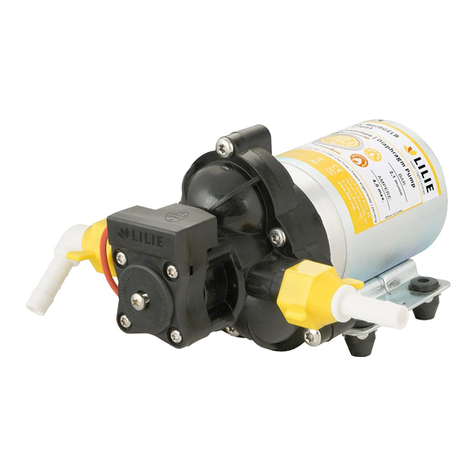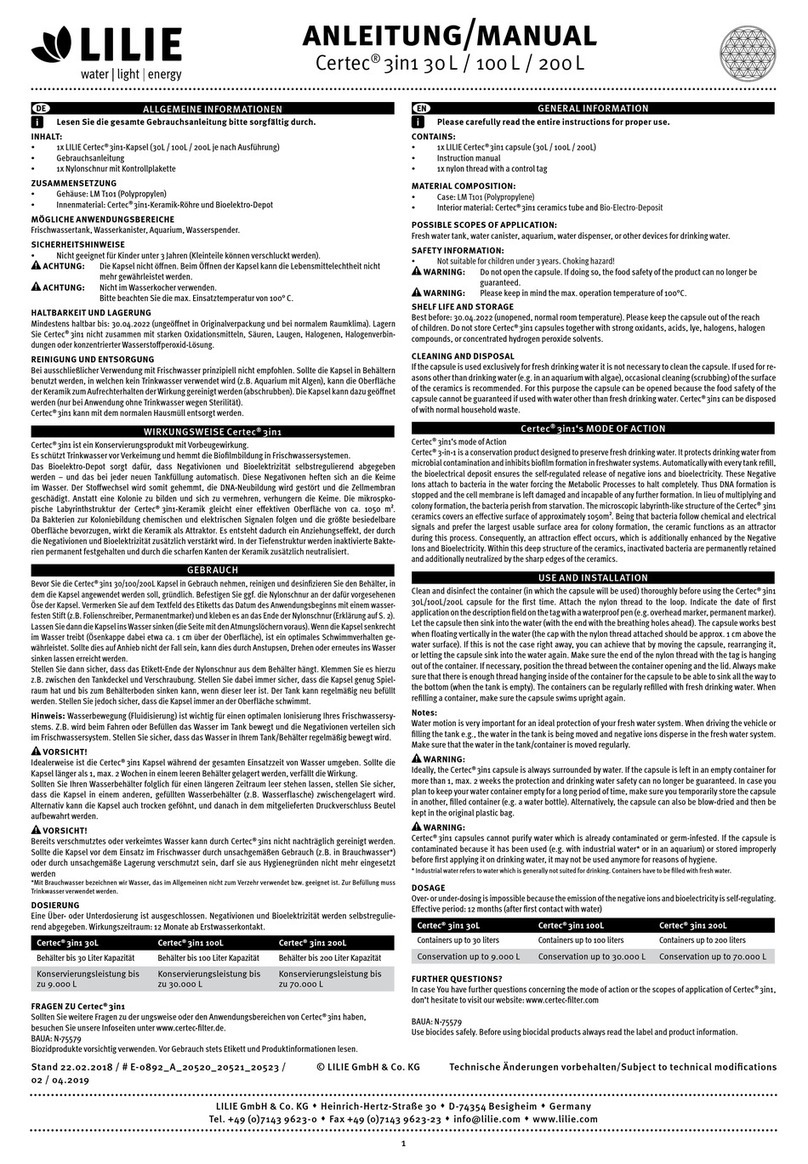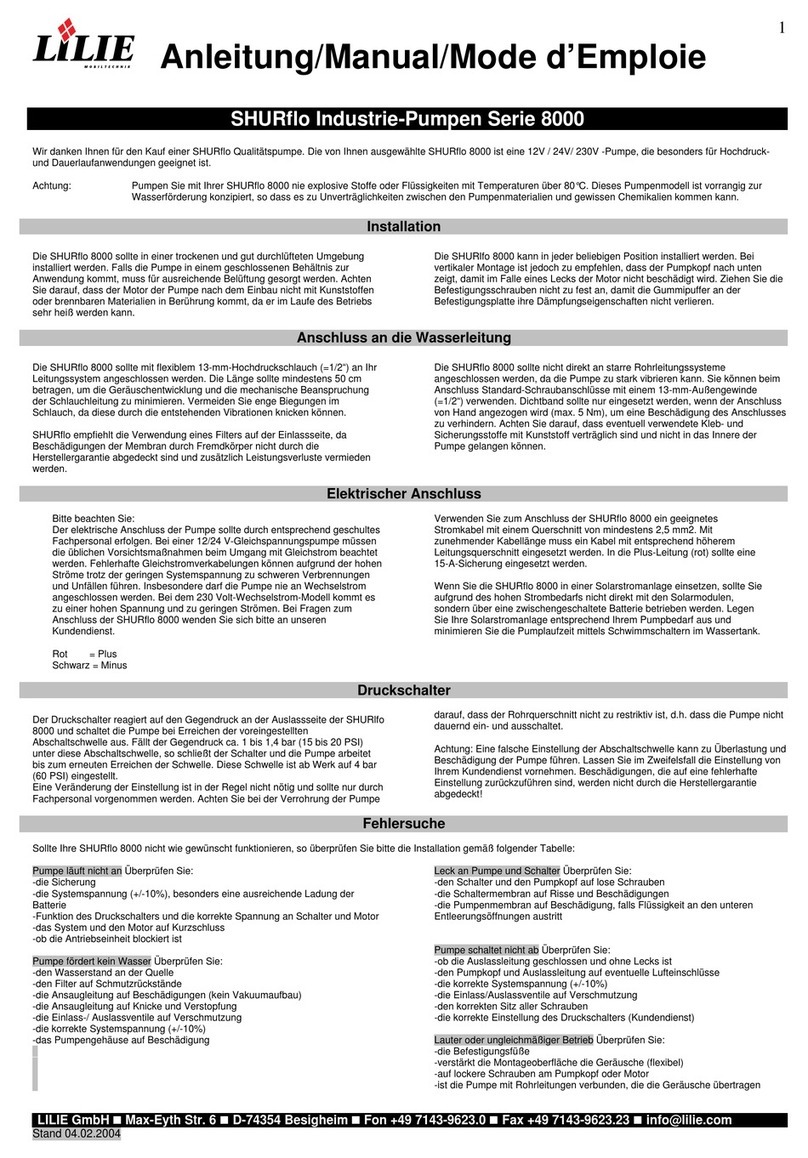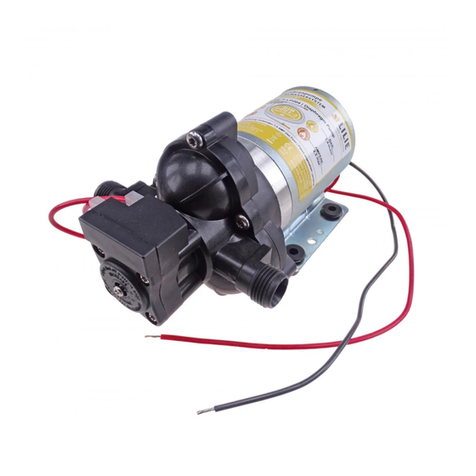
Manual
CLASSICSERIE™ WeißGELB®, SOFTSERIE® WeißGELB®
CLASSICSERIE™, SOFTSERIE®, SMARTSERIE™
Lilie GmbH & Co. KG ■ Heinrich-Hertz-Str. 30 ■ 4354 Besigheim, Germany ■ Tel. +49 (0) 143 9623-0 ■ Fax +49 (0) 143 9623-23
2.2.2 Hose system
If possible, please use our flexible LILIE native or LILIE Eco native drinking water hoses with the largest possible inner
diameter (min. 10 mm, ideally 12 mm) that have been tested according to DIN 2001-2. The LILIE native drinking water
hose cushions and reduces vibrations the best in this respect. You can find our drinking water hoses (e.g. #88112 LILIE
native 12x18 as the ‘ideal hose’) in the ‘Water tuning’ section of our catalogue. Smaller pipe diameters can lead to
cavitation, increased pressure resistance, a restricted delivery rate and increased operating noise.
Our drinking water hoses are very quiet compared to pipe systems. If a pipe system is installed nevertheless, you can
reduce the vibrations by using a piece of hose measuring min. 50 cm in length between the pump and the pipe. When
rigid pipes are connected directly to the pump, the pump’s operational vibrations may be amplified, resulting in louder
operating noise and cavitation, leakage or defects in other components.
2.2.3 Complete system and inner diameter / flow optimisation
A straight course and gentle bends and curves in the hoses or pipes allow the water to flow quickly and conveniently.
Please, therefore, avoid tight bends or corners in the pipes, especially directly upstream and downstream of the pump.
•Constrictions in the pipe cross-section, especially in the pump inlet and outlet, should be avoided if possible.
•This also applies to shut-off and drain cocks, as well as elbow connections with a smaller inner diameter.
•Please use water taps with a large outlet. We recommend using 35 mm cartridges at least, but 40 mm ones are
better.
2.2.4 Water distribution block and connector
Please use a water distribution block with a correspondingly large inner diameter, e.g. our flow-optimised water
distribution block #24207 LILIE WeißGELB® five outflows instead of individual T-pieces.
The fewer connectors used in the water installation, the better and more reliable the overall water flow. Please,
therefore, use as few connectors as possible. Where necessary, please use connectors with a high flow rate, e.g.
#69510 LILIE WeißGELB® Y-connector.
2.2.5 Pre-filter
Please use a suitable pre-filter with 50-mesh, a mesh width of approx. 0.25 mm, to prevent contamination of the pump
with dirt particles, e.g.
•for CLASSICSERIE™ and SOFTSERIE®: #LS200162 ½” screw-on filter
•for SMARTSERIE™: #200155 pre-filter with quick fittings
2.2.6 Fasteners
When laying ring pipes, please ensure that vibration-reducing fasteners are used, e.g. #50309 Lilie WeißGELB®
fastening clamp.
2.2. Drinking water filter
•We recommend using our Certec® filter unit | 10” (#20593) or the LILIE biolit 97 filter unit (#20293) because
they are coordinated to the LILIE WeißGELB® drinking water system and the pumps for the caravanning sector.
Place drinking water filters on the pump’s pressure side (not in the suction pipe).
•Filter units generally have a pressure-reducing and flow-reducing effect in the water system. This phenomenon
is minimised with Lilie filter units. In this case, the SMARTSERIE™ pumps throttle the delivery rate.
•If your application requires the use of a filter unit with a high pressure loss, it may be advisable to use a
stronger pump.
2.2.8 Pressure compensation tank
•If you are using a CLASSICSERIE™ pump in your system, we recommend that you use a pressure compensation
tank (e.g. #LP1805 pressure compensation tank).
•No pressure compensation tank is required in connection with SOFTSERIE® and SMARTSERIE™ pumps. If you
do not want to dismantle your existing pressure compensation tank, we recommend that you depressurise it.
2.3 Electrics
Please connect the pump to the battery and install a circuit breaker. We recommend fusing with a 15 A fuse in the (red)
positive line. When used in the marine sector, a UL-approved marine switch should be used.
The cross-section of the cables used for power supply and earthing depends on the distance between the pump and the




























